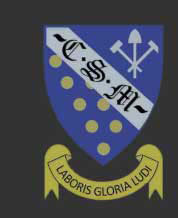  |
CSM Rock Collection
|
Granite (metaluminous), IG03GR01
|
DescriptionMetaluminous porphyritic biotite granite from Shap (Cumbria, England). The granite is composed of perthitic orthoclase (orange), quartz (clear), plagioclase (white), and biotite (black) with minor pyrite (yellow) along fracture surfaces. Although not visible in hand specimen, the sample contains a wide range of minor and trace minerals. |
Hand specimen
|
|
|
Thin section |
Thin section in plane polarised light (full section)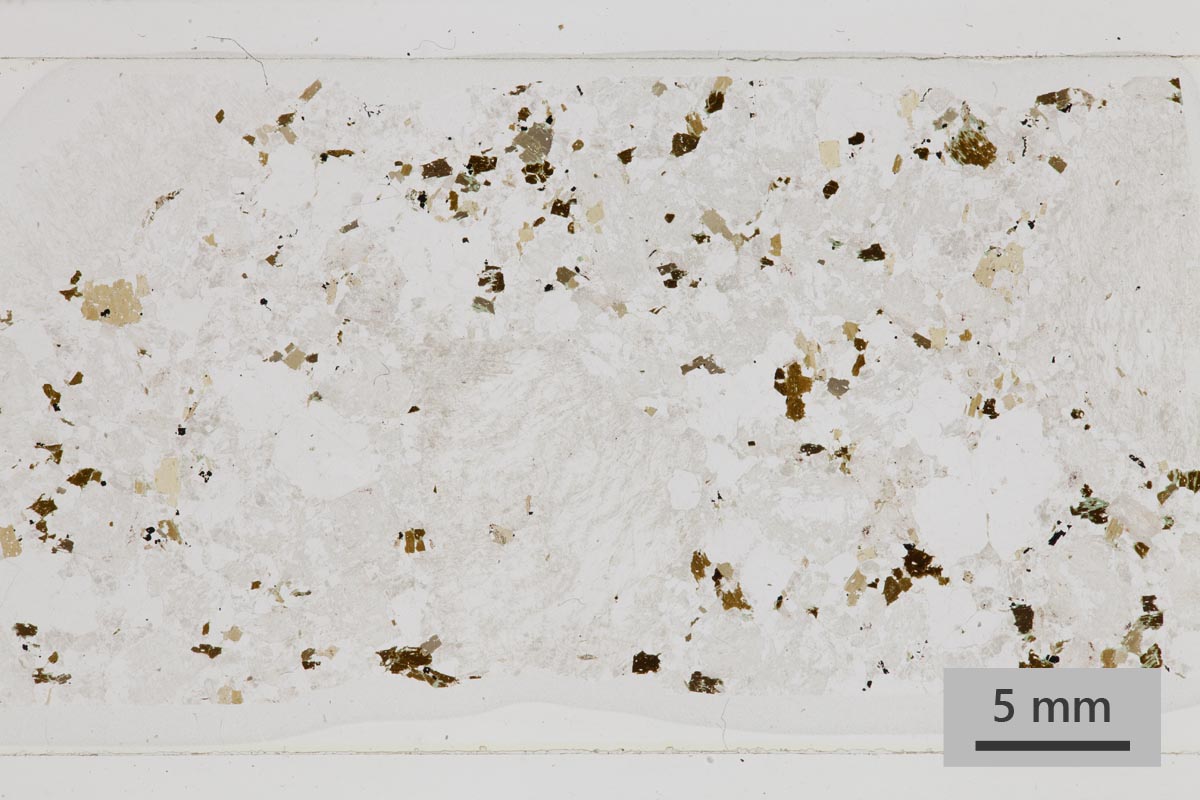 PPL view. Large alkali-feldspar crystals are identifiable as slightly grey areas in this view but the grain boundaries are hard to identify. Transparent areas can be recognised as quartz and biotite is now readily identifiable as greenish brown grains. |
Thin section in cross polarised light (full section)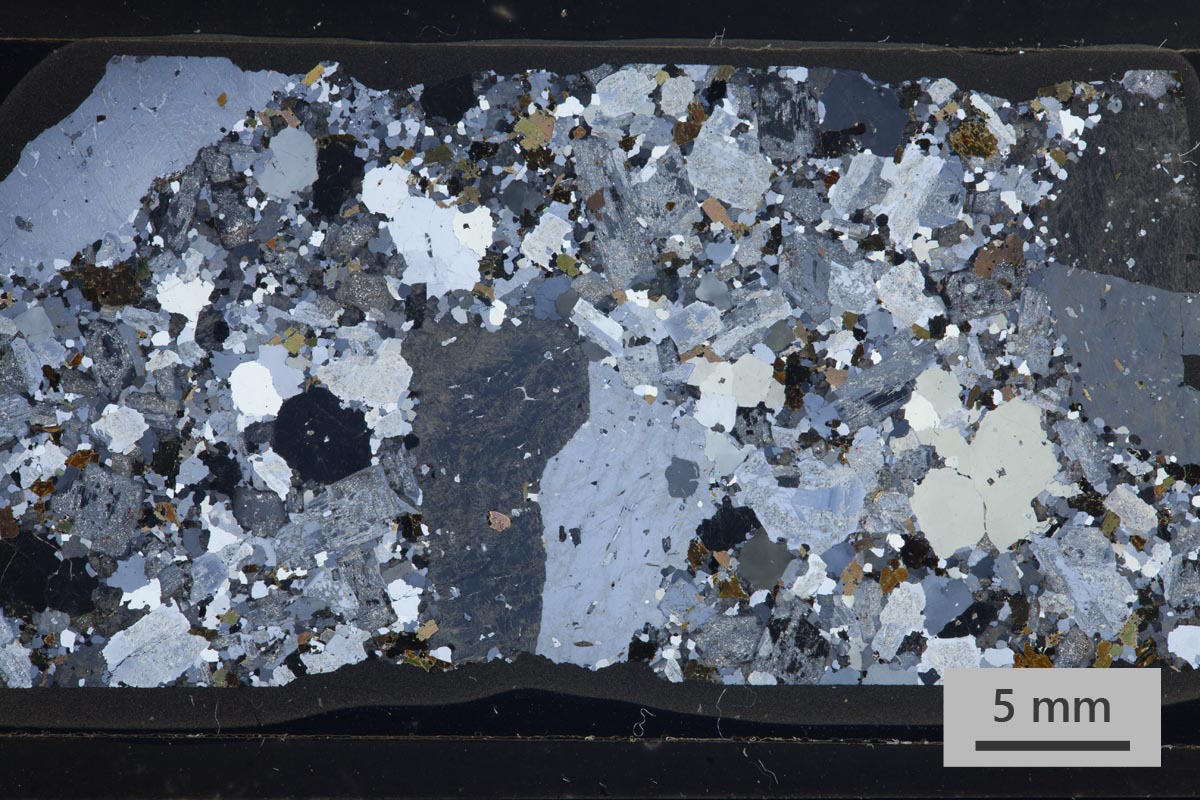 XPL view. In cross polars the grain boundaries between feldspar crystals become apparent. Alkali-feldspar crystals (orthoclase) demonstrate the typical single twins and smaller polysynthetic twinned plagioclase can be seen, but many have been altered which obscures this detail. |
Thin section, detail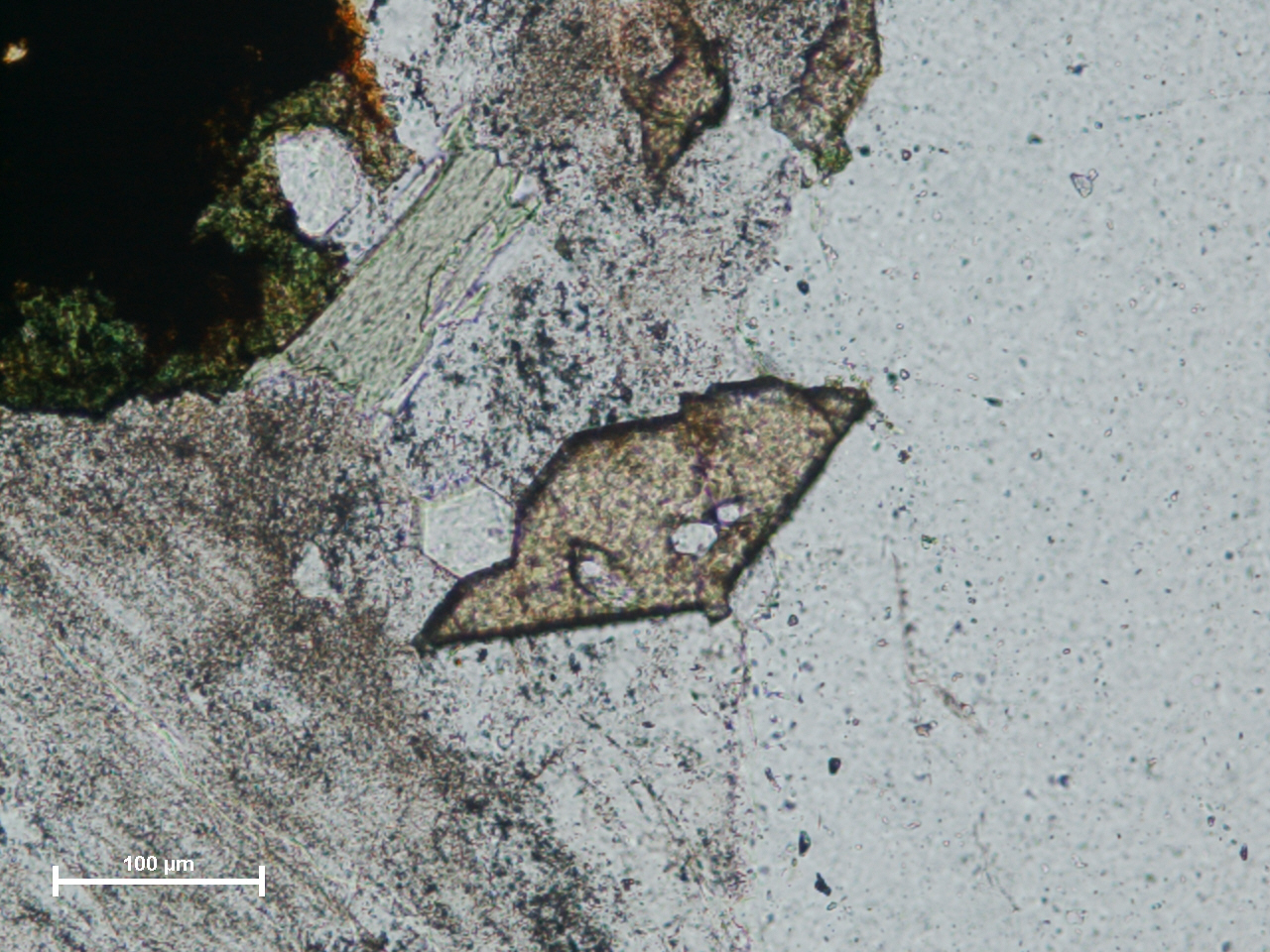
High relief titanite with a euhedral diamond shaped outline. Note the small hexagonal apatite crystal on the left hand side of the titanite. Both of these minerals are easier to find in plane polarised light and apatite, in particular, is easy to miss under cross polarised light.
Under crossed polars the apatite crystal has now gone dark. This is because it is being viewed down the C-axis, as demonstrated by the hexagonal outline. Titanite, typically, does not change much between plain polarised light and under crossed polars and the strong body colour obscures the birefringence. The light crystal covering the right hand side of the view if quartz with orthoclase to the left.
Viewed in plain polarised light the central upper portion
of this view is dominated by biotite which, in places, has
been altered to pale green chlorite. Several high relief
titanite crystals can be seen in the central lower portion
of the view, many are very well formed, together with an
opaque mineral. The opaque mineral might be pyrite based
on observations of the hand specimen. Some apatite
crystals can be seen with the biotite as is often the
case. 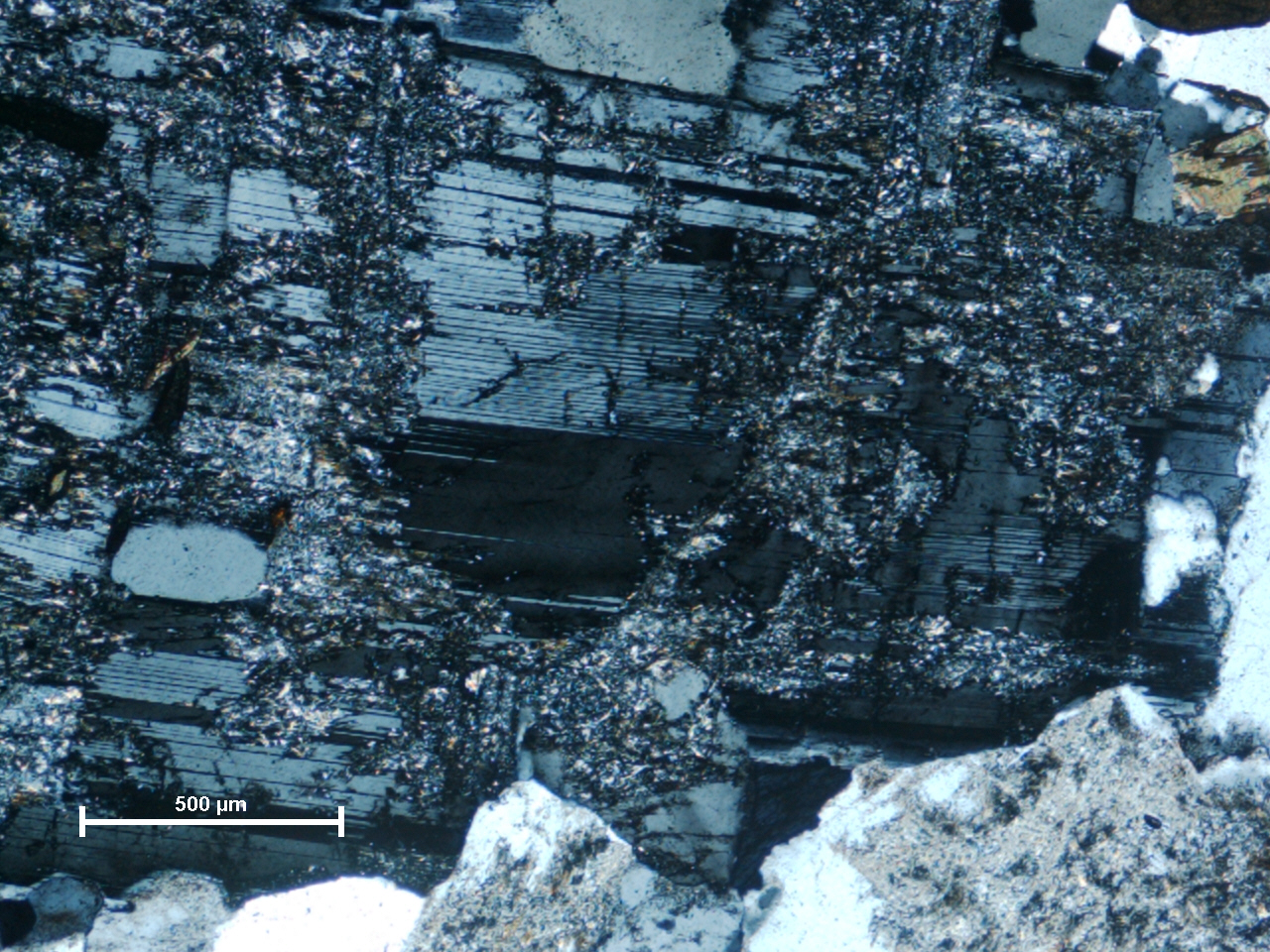
This view under crossed polars is dominated by
plagioclase, which demonstrates polysynthetic twinning.
This plagioclase crystal is heavily altered by sericitic
alteration and small bright crystals of sericite are just
visible in places.
|